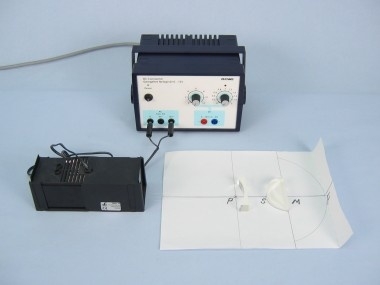Principle
In conjunction with their investigation of the model for the short-sighted eye, the students strengthen their understanding of the light path with a convex lens. Using the example of the correction of the short-sighted eye with the aid of planoconcave lens, the useful application of the laws of optics to man is illustrated. At the same time, their knowledge about the ability of the eye to accommodate is reviewed and, using the example of divergent incident light (near the eye), is once more investigated experimentally.
The experiment is demanding in terms of abilities and skills required particularly with reference to the necessary abstraction from the level of the model to the real eye. In addition to a clear conception of the construction of the human eye this requires, that the students understand the principle of image formation on the retina.
On the other hand, with this experimental series, one can achieve a substantial contribution to the understanding of everyday experience (wearing glasses, how spectacles work) and instil an awareness of implications for social behaviour (sympathetic behaviour towards spectacle wearers).
Benefits
- Multifunctional light box - All-in-one: Can be used for geometric optics on the table, colour mixing and on an optical bench
- Extension with others sets at anytime, no additional light sources needed, recognition value for students
Tasks
What is short-sightedness and how can it be corrected? Investigate how short-sightedness affects the seeing of objects located near or far away using the model eye, and which possibilities there are for its correction.



